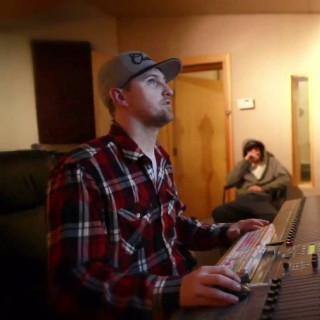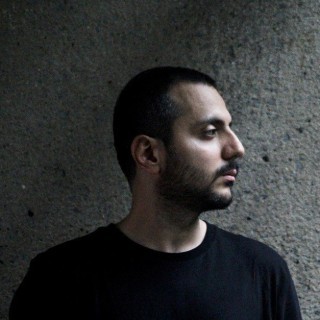
03.03.2014
101
Poetry
Tekst piosenki
William Butler Yeats -- "Leda and the Swan"
A sudden blow: the great wings beating still
Above the staggering girl, her thighs caressed
By the dark webs, her nape caught in his bill,
He holds her helpless breast upon his breast.
How can those terrified vague fingers push
The feathered glory from her loosening thighs?
And how can body, laid in that white rush,
But feel the strange heart beating where it lies?
A shudder in the loins engenders there
The broken wall, the burning roof and tower
And Agamemnon dead.
Being so caught up,
So mastered by the brute blood of the air,
Did she put on his knowledge with his power
Before the indifferent beak could let her drop?
My reading of Yeats’s “Leda and the Swan” showed fifteen deviations from iambic pentameter. The poem starts off as an English style sonnet (three quatrains and a couplet with the quatrains rhyming abab et cetera, and the couplet rhyming with itself) but switches into the Italian form after the second quatrain with a set of tercets that make up a sestet rhyming cde cde. “Variation, surprise, is the very essence of every artist’s trade; and one of the most important sources of metrical power and pleasure is the perpetual tension between . . . the base rhythm and the variation” (“Versification,” from The Norton Anthology). Yeats’s poem plucks this instrument of “perpetual tension” and creates evocative poetry that takes the reader on a voyage along the Greek Myth of Leda and the Swan while asking vast, powerful, and demanding questions that arise from the story.
The opening line starts off with a pair of iambs and a caesura. The two iambs flow together in a natural rhythm – then hit an abrupt wall (the caesura). One is compelled to read on, having been dealt “a sudden blow” by the combination of the sudden caesura, the stressed “blow,” and the questions that the three words raise. The reader then finds a spondee sandwiched between two iambs (the great | wings beat | ing still”). The “wings” are “great wings” and are responsible for the “beating,” which seems as if it may be tied to the “sudden blow,” naturally causing “wings” to command strength and be stressed. “Beating” is active and violent, so “beat” is stressed as well to make a strong and evocative spondee.
The second line is made up of three iambs, a short caesura, and two more iambs. The sudden prevalence of iambs, and the pause that allows one to recognize them, apologizes for the wild structure of the opening line. This apology lets everyone know the poem is in iambic pentameter. The iambic meter and the brief medial caesura produce a calming effect. The calmness of line two subsequently disorients/excites the reader by enhancing the force of the deviations in line three; the enjambment between the lines reinforces these effects. The trochee (“by the”) tumbles the reader right into a spondee and caesura (“dark webs”). The spondee results from simple choices: juxtaposed with “thighs caressed,” “dark webs” is a creepy and surprising image. The brief caesura reinforces the effect of the line and lends importance to the words by causing one to linger over the phrase. The second trochee (“caught in”) is simply a use of stress to emphasize a good word. “Caught” is a powerful word that sticks out in the line -- it overpowers "in" and creates a trochee. “Versification’s” concept of perpetual tension between the regular and the irregular meter is used here to intensify the poem’s move into a dramatic and frightening tone. Line four enhances the girl’s inescapable situation by reverting to a true iambic pentameter (which reads in an official, matter-of-fact tone). The perfect rhyme scheme (“still,” “bill,” “caressed,” “breast”) and the terminal caesura gives closure to the moment, highlighting Leda’s capture and ending the quatrain.
The second stanza opens with a trochee. “How can | those ter | rified | vague fing | ers push”; “how” tells the reader the line is (part of) a question and stressing it gives the inquiry more force -– as if the speaker is pleading to know the answer. Line seven has a brief medial caesura in the middle of an iamb, and then presents a pyrrhic and spondee (“in that | white rush”). Neither “in” nor “that” are important words while “white rush” is evocative, alluring, and descriptive imagery that calls for power in pronunciation; in addition, “rush” is also a slant rhyme with “push,” deviating from the expected full rhymes, a choice that draws more attention to the line. By making “in that” pyrrhic instead of iambic, Yeats creates a line that is more balanced and also highlights the imagery of the spondee; “that white rush” emphasizes a place -- “white rush” emphasizes an image. The spondee in line eight (“the strange | heart beat | ing where”) occurs because the “heart” is both “strange” (which is an unexpected and interesting adjective) and “beating” (which is active and recalls its usage in line one). The foot also forms the word “heartbeat,” which invokes a strong pumping rhythm.
“Leda and the Swan” switches from the English form to the Italian form in the next stanza; the switch is unexpected to a reader expecting another quatrain. Yeats’s typographical break in line eleven surprises even a reader who catches the switch to an Italian style. However, the Italian style fits the poem perfectly, as even the English quatrains act as the Italian form would be expected to (there is an “observation in the octave” (the two quatrains in this case) – and an “amplifying conclusion in the sestet”, a pattern that “Versification” notes as a common one to Italian sonnets – in the case of “Leda and the Swan” there are a pair of observations and conclusions instead of the standard single form). The poem’s rhyme scheme is the only element which fits the Shakespearean form (from the Italian abba to the English abab).
The tercet opens with a solid iambic pentameter that enjambs into line ten. A brief medial caesura after the first two iambs (“The bro | ken wall,) provides the poem an opportunity to make a turn from sexual imagery to the evocative imagery of the aftermath of the Trojan War and the poem also simultaneously makes a turn from observation to “an amplifying conclusion.” “Broken wall” doubles as both an image of rape and the infamous Trojan Horse that allowed Greek forces to finally break past the walls of Troy. “The burning roof and tower” are images of the sack of Troy – the phrase continues the iambic meter and finishes line ten with another enjambment. Line eleven is broken in half. The first half is full of power despite being three words long (“And A | gamem | non dead.”). “And” comes after a list of things, telling the reader it is about to reveal something important (and thus becoming important). “Agamemnon” can only be (properly) pronounced one way and the stressed “A” forms a slant rhyme with “And” making the spondee natural and strong. The iamb is a matter of pronunciation, and the combination with the following iamb and terminal caesura gives heavy emphasis to “dead.” The half-line is balanced but full of power due to its multiple stresses.
The white space that follows the first half of line eleven makes one linger longer on the heavy line –- a line that has directly tied Leda’s rape by Swan-Zeus to the ensuing decade long Trojan War and its aftermath through her children. Leda was taken by Swan-Zeus on the same night she had sex with her husband. She then gave birth to two eggs, which hatched Helen, who was the reason the Trojan War was started, and Clytemnestra, the wife of Agamemnon, King of Mycenae and Commander of the united Greek forces, who murdered him after his triumphant return from victory (in the most prominent version of the story). The massive Trojan War and its aftermath are only the direct implications –- but Leda also triggers events in Greece for years afterwards, including the start of writing down and documenting history, thus birthing modern history (so in a way –- by this logic –- if Leda hadn’t been raped by Swan-Zeus we might still just have mythologies and stories and no actual historical texts). The implication of Leda’s rape as the birth of modern history ties in neatly with the question that is raised in the rest of the sestet.
The second half of line eleven, which sits in the empty space after and below the first half, metrically completes line eleven (meter is the reason I call the lines half-lines; the two combine to be one line metrically, making the line still act like a sestet / pair of tercets despite the typography). The typography leaves a blank space where the first three feet should be – but the spacing creates an extended pause before the second half of line eleven. Line eleven immediately creates momentum with another strong trochee-spondee-caesura combination (“Being so | caught up,”). “Being” is a key word that directly ties in all the action and power from the previous lines by implying something like: being that all this is going on, we can see some new thing. After the long pause, and the relative unimportance of “so,” a little modifier when compared to the active “being,” “caught up” naturally reads as a spondee. “Caught up” catches the energy and power built up via the previous lines and “being”; the power invoked by “caught up” forms a strong spondee that prepares the reader for Yeats’s final tercet. The spondee and caesura serve not only as a way to slow the reader down, but also to give a tone to the speaker that seems insightful, as if the earlier lines have all sunken together to reveal some new tangent. The tone is that of a “Eureka!” moment, urging the reader to continue.
Line twelve is standard iambic until it is broken by a trochee in the fourth foot (“So mast | ered by | the brute | blood of | the air,”). “Blood” alone is a violent, vivid word that naturally takes precedence over “of,” especially when “brute” has both alliterative and conceptual similarities that lend the word more power. The foot is forced to form into a trochee. The terminal caesura mimics the speaker taking a breath before starting his question with a trochee (“Did she”). “Did,” like “how” in line five, tells the reader the line is an inquiry. “Did” combines with the spondee that follows (“put on”) and the combination creates the tone of a man who desperately craves an answer to his question. The tone is continued in line thirteen with iambs (mimicking natural human speech and consequently contrasting/emphasizing the grandeur of the question). Enjambment speeds the reader into the final line.
The conclusion in line fourteen (“Before | the indif | ferent beak | could let | her drop?”) is mostly iambic with a somewhat ambiguous fourth foot. One could argue that the rhythm of the iambic pentameter meter takes precedence and make the foot an iamb; however, this seems a little off (to me). The goal of the meter is to mimic natural human speech and, as “Versification” says (so conveniently that it is uncanny), “irregularity or variation in the fourth foot tells us that we are hearing not robot speech but human speech.” “Could” captures the brevity and brutality of the rape and the curiosity surrounding the overwhelming divine powers of Zeus. The word "could" focuses and stresses all the pleading desperation for an answer. The poem asks: did she (a completely helpless woman being raped by a giant swan-god) know the role she would play in triggering the momentous Trojan Wars (and subsequently the drama throughout all the Greek kingdoms, the Odyssey, and the beginning of true modern history) before Zeus, an indifferent god, “could” finish with her? “Could” she know all that “before | the indif | ferent beak | could let | her drop?” The power that is in “caught” makes it feel more appropriate to read the foot as a spondee, which (in this case) does not take away from the rhythmic power of pure iambic pentameter and emphasizes both Leda’s helplessness and the speaker’s desire to know the answer to his question. The nature of the slant rhyme (“caught up,” “her drop”) and their inherent contrast (up and down) is interesting and seems to invoke themes such as life’s inherent uncertainties (any given day could be amazing, which would be up, or you might get raped by a swan, which would be down).
The motif of the unknowable quality of life ties in nicely with poem’s end on an unanswerable question –- the slant rhyme and varying meter reinforce the element of the unknowable. The motif of the unknowable/unanswerable motif lend to the effect of the overwhelming divine –- as divinity is innately incomprehensible to the human mind. All the uncertainties at the end of the poem mimic Leda’s helplessly overpowered / out of control situation. The three concepts reinforce one another and strengthen the power of the poem.
Tłumaczenie
Brak
Polecani artyści
Najnowsze teksty piosenek
Sprawdź teksty piosenek i albumy dodane w ciągu ostatnich 7 dni


























